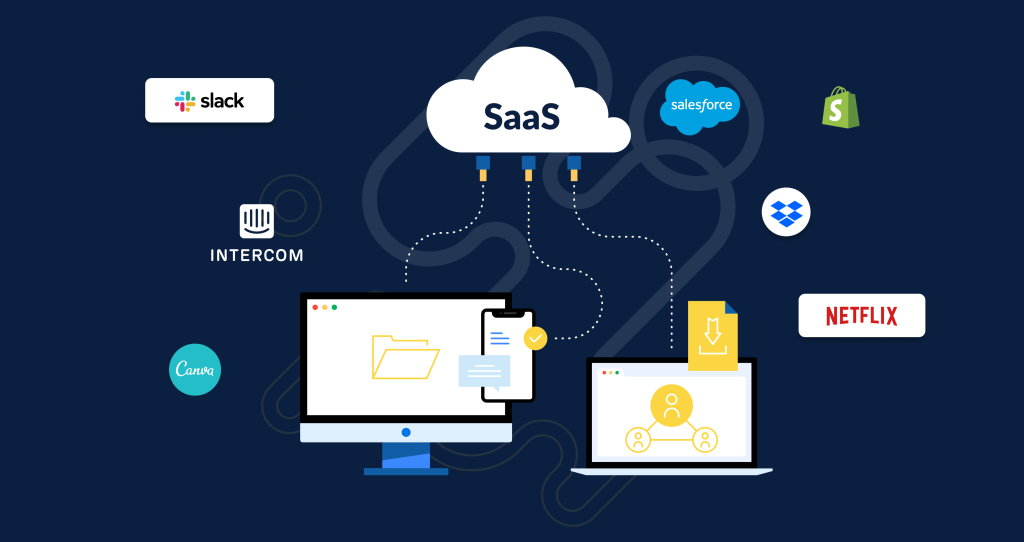With an average of over 480 billion hours spent on live-streaming platforms in 2020, the industry is undoubtedly valuable and growing astronomically.
Are you a startup founder, product manager, or serial entrepreneur wondering how to create a live-streaming app?
Or you’re simply seeking more information on the steps to live-streaming app development.
If yes, then keep reading this article as it contains details such as:
Definition of a live-streaming app
Insight and growth prospects on the live-streaming app market
Types, and examples of live streaming apps
Cost of creating a live streaming mobile application
Steps to developing a live streaming mobile application.
Intelivita provides top-notch mobile app development solutions that helps you align your application infrastructure with the latest trends using the best modernization approaches.
Book a 30-minute FREE consultation with us to give a powerful digital upgrade to your live streaming app project.
Let’s delve into the crux of the article:
What is a Live Streaming App?
A live streaming app is a mobile application that lets users record and transmit videos concurrently to many viewers using similar software. For example, a streamer using an app to broadcast requires receivers on the same app.
Due to demand, the number of live streaming applications has risen astronomically since the innovation was launched in 1995.
Thanks to advancements in IT infrastructure, there are now multitudes of live streaming mobile apps, some of which are:
YouTube live
Facebook live
Zoom
Bilibili
Google Meet
Twitch
And more!
Some live-streaming apps were niched down to gain dominance amongst target users.
For example, Twitch niched down to become a live streaming platform primarily for gamers. And due to its authority in that niche, the platform has over 5.7 billion streams in Q3 of 2022 alone.
At over 3.3 million subscribers, Hulu is the largest live streaming TV service .
Thinking of venturing into this industry? Let’s provide more in-depth insight into its prospects.
Insight on Why You Need a Live Streaming Mobile App
As opined earlier, the demand for live streaming services has been growing rapidly, leading to a corresponding profit for startups with products in that niche.
Here are additional statistics pointing to the fact that owning a live streaming mobile application is a great move:
The Global live-streaming market is currently growing at a compound annual growth rate of 20.3% .
Revenue from video streaming apps is expected to grow from $72.2 billion in 2021 to $120 billion in 2022.
China’s most popular video-sharing platform, Tencent, has 900 million users .
80% of users would rather watch a live video than read a blog.
Beyond the robust industry and its quick-growing market, investors have also shown a keen interest in investing in startups with a product in this niche.
Here are some companies that have received noteworthy funds here:
Live Streaming video company 100ms raises $20 million live video app,
Chinese Live Streaming service Live.me raises $60 million in series A funding,
Applicaster raises $11 million for OTT streaming service.
Now that you have an idea of the opportunities therein, we’ll dig into the types and examples of livestreaming applications available.
Types of Live Streaming Apps with Examples
Before we discuss the steps to creating a live streaming mobile app, you’ll need to know the category your mobile application idea falls into.
Here are three distinct types of live streaming applications:
Type 1: Live Broadcasting Applications
This is the most prominent type of live-streaming applications. Apps in this category allows users to capture, record, stream, share, and broadcast live audio and videos to anyone with access.
Some popular live-streaming applications in this category are YouTube, Twitch, Periscope, Facebook, and Periscope.
Type 2: Video-on-Demand Streaming
Live Streaming apps in this category lets platform users schedule and view favorite TV programs online in real-time. Popular platforms offering this service entails YouTube TV, Hulu, Amazon Prime etc.
Type 3: Audio Streaming
Audio streaming platforms are apps for real-time recording, and broadcasting sounds for anyone with access, and a suitable device. Common examples of apps in this niche are Podbean, Spotify etc.
How to Create a Livestreaming App In 2024?
The process of creating a live streaming app is similar to other mobile applications.
Here are the steps involved:
Let’s discuss what each livestreaming app creation step entails:
Step 1: Discovery Phase
The discovery phase in livestreaming app development is a planning stage where team members hold meetings with other startup founders to understand the app idea, category, and niche of the target audience.
Information gathered is then used to create a budget and estimate deliverable timelines.
The discovery phase has multiple aspects that entail:
Research on product viability
Identify business goals
Identify your target audience
Estimate budget and timeline
Create project roadmap.
Let’s discuss each point:
Aspects
Meaning
Viability of the live streaming app
Viability regards the application’s ability to attain your business goals.
Before your application is deemed viable, it should have the potential to be profitable, scalable, and implementable. 42% of startups fail simply because the market doesn’t want their product.
Highlight your business goals
This is the business target you wish to achieve by launching the live-streaming app.
Statistics suggest that 13% of startups fail because they lose focus. Thus, it’s imperative to identify your corporate goals and curate workable strategies to attain them.
Find your target audience
Identify the sets of people that’ll be willing to use your live streaming app.
Since your product is for consumers, conducting a series of analyses is imperative to know if they need it.
Some aspects to check include:
Demographics
Pain points
Customer profile
Usage triggers.
Not identifying the target audience is responsible for 35% of startup failures .
Estimate budget and seek funding
Create an estimate for expenses needed to create your live streaming app, and discuss with investors how to get the fund.
Cash flow problems are the major issue for most startup failures.
As a matter of fact, 82% of businesses fail because of cash flow problems, and lack of capital is a challenge for 33% of business founders.
Take cognizance of less obvious but significant expenses like hidden costs, marketing costs, and the cost of maintaining compliance.
Create project roadmap
The project roadmap is a document containing the visual representation of tasks expected to be performed and the timeline for performing them.
Benefits of the discovery phase in live streaming app creation entail:
It helps to reduce costs
It helps founders understand live-streaming app development risk earlier, thereby taking preventive measures
It helps to validate the profitability and scalability of your app idea
It helps to identify needed talents
It streamlines the process of business goal formation.
Once you’ve set the groundwork with the discovery phase, the UI/UX design phase is next.
Step 2: UI/UX Design
This next step entails the creation of wireframes and mockups for the live streaming app development.
These wireframes and mockups provide a pictorial view of the overall look of the live streaming app, and an opportunity to gather early feedback from important stakeholders before development begins.
The design phase is where your user experience and user interface are conceived.
This phase is more fluid than others, as deliverables often require edits. However, the process is a highly creative one and lays the foundation for other technical activities.
It’s imperative to have completed the discovery stage before starting the design phase. This is because output on consumer research will be used to map out a suitable user experience for the solution.
At the end of this step, you should have the following deliverables:
An interactive prototype
Separate iOS and Android live streaming app design or a cross-platform design
A full UX wireframe.
The deliverable from the design phase should be a clear pictorial view of every feature a developer needs to create. Deliverables should both be technically practical and aesthetically beautiful.
For more knowledge about this phase, read this article on how to design an app .
Want to Develop a Live Streaming App?
Livestreaming app design is the bedrock of overall development, requiring highly experienced and dedicated experts.
Schedule 30-mins Free Consultation
Step 3: Development Phase
This step is the process where the core development takes place. Here, a team of backend and frontend developers write codes using a range of suitable programming languages.
For this step, we’ll divide live streaming app development phase into three parts:
Choose suitable tech stack
Create the backend
Create the mobile interfaces.
Let’s discuss each of this part:
Parts
Meaning
Choose your tech stack
Choose an appropriate tech stack based on your project complexity, time-to-market, and technical needs.
For example Java and Rust guarantees fast server-side to front-end information transfer, while DJango guarantees quick time-to-market.
Thus, to choose your tech stack, do the following:
Think through project type; (iOS, Android, or Cross-platform)
Choose a stack that aligns with your business needs
Consult with experts or partner with a software development agency.
Create backend features
These are server-side features that are unseen to users and determine the platform’s architecture. The backend developer here generates endpoints for the user interface.
The backend operation decides how the live streaming app works. Thus, programming languages for the backend are designed to create interactive components.
Popular backend languages that can be used for live streaming app development are:
Python
Java
PHP
Node.JS
Next.JS
And more.
Create mobile interfaces
APIs generated in the backend are integrated within the front end to ensure app users can initiate actions on the app.
It also takes care of the aesthetics by programming all images, icons, texts, and other characters in the app’s interface. The front-end operation decides the usability of the live streaming app.
Thus, mobile programming languages are designed to be flexible.
Popular mobile app languages used for live streaming app development are:
iOS – C#, Swift
Android – Java, Kotlin
Cross-platform – React Native, Angular.
At the end of this development phase, some features would have been created for the live streaming mobile app.
The type of features you’ll need varies with the intricacy of your business model. However, generic must-have features for live streaming apps are:
Must-Have Features for Live Streaming App
You need to have these features to create live streaming app MVP:
Features
Purpose
Sign-up/sign-in
This is a registration form where users can register to your platform, and sign-in using requisite credentials.
Live streaming
This is the core feature of the app, and should be centrally located.
This feature lets users record, broadcast, and watch live streams to product users connected to other broadcasters on the app.
Search box
This is a functionality for users that want to find specific items on the platform. It aids navigation.
Gallery
This feature helps to store, and organize videos on the mobile app.
Profile
It provides details on the account owner’s info, aids customization, and shows a list of friends/subscribers.
Review/Rating
Reviews and ratings help users identify important information.
Advanced Features You Can Add
For optimum user experience, and to edge out competitors, you can add the following advanced features:
E-mail and social media sign-up
In-app messaging
Feed
Recommendation
Push notifications.
Once these features have been created, the next step is testing the quality of its functionalities. Let’s discuss these:
Step 4: QA Testing Phase
The QA testing phase is the process of verifying a system and its components to ascertain that it adheres with given blueprint, technical requirements, and the overall business need.
In planner terms, it’s a process of identifying bugs, errors, and gaps that conflict with businesses and technical requirements.
QA Testing Procedures for Live Streaming App are:
A QA tester should perform the following procedures to ensure your product is maintainable, scalable, secure, and resilient.
QA Tests
Meaning
Unit testing
This is a type of testing to ascertain that every feature, procedure, and method in your live streaming app works.
It guarantees that all parts of the platform behave correctly.
Integration testing
This test checks that every feature interacts appropriately, and works together.
End-to-end testing
This test verifies that your mobile app works appropriately from beginning to end of a user flow.
For example, it checks the end-to-end of your live streaming app by testing: the moment a live streamer signs-up, opens the livestream feature, shares the link to followers, and gets viewers.
It imitates how a user will use the platform, and identifies potential issues they’ll encounter.
Acceptance testing
This test happens after live streaming app development.
It’s performed by final-users, and it’s used to check if they’re willing to use the product based on existing features, and aesthetics.
Regression testing
It ensures that additional code during livestreaming app development feedback does not negatively impact the app’s performance.
Performance testing
It tests your live streaming app speed, its scalability and ability to handle expected and sudden surge in users. It identifies performance bottlenecks under multiple metrics.
Once QA tests are over, and the app is certified to be of good quality, the next step is product launch.
Step 5: Live Streaming App Launch
Once your live streaming app appeals to founders and other stakeholders involved, then it’s time to launch your mobile application on suitable platforms.
The end goal of live streaming app development is launching a product several people use for live recording and broadcasting, which includes having a high retention and engagement rate. For a successful product, ensure you have a relevant feedback loop.
Having a readily available live streaming app requires that you have a development team for tech support and app maintenance. Quick modifications also influence user experience, leading to a high retention rate.
For your maintenance team to function effectively, you need a budget that’s at least 25% of the overall cost of building an app . What does this mean?
If the overall cost of developing a live streaming app is $100,000, then your maintenance budget should be at least $25,000 for a start. Anything less may result in multiple downtimes due to poor product maintenance.
Now that you’ve learnt how to create a live streaming app, let’s discuss on the live streaming app development cost:
To hire an experienced app development agency with a verifiable portfolio, then reach out to our sales team.
Contact Us Now
How Much Does it Cost to Develop a Live Streaming App In 2024?
Live streaming app development cost ranges from $35,000 to $200,000.
However, the exact amount to pay may differ with:
The type of app
Location of the development team
The product’s complexity
The type of team involved.
Live Streaming App Development Costs by Product Complexity
The complexity of the live streaming mobile app refers to the number of features, functionalities, user roles, and how every function interacts with each other.
For example, YouTube is more complex than Google Meet, because while YouTube has multiple purposes apart from live streaming, Google Meet is simply a uni-purpose app.
By complexity, the cost of creating a live streaming app can be defined by:
Basic complexity
Average complexity
Advanced complexity.
Let’s discuss how they differ by price:
App Complexity Costs Example
Basic
$35,000-$69,000
Google Meet
Average
$70,000-$150,000
Zoom
Advanced
$150,000+
YouTube
Note: By basic, it doesn’t literally mean that the product is simple to create, it refers to the fact that development time is lesser, compared to other live streaming apps.
Live Streaming App Development Cost by Team’s Location
Another important factor affecting the cost of developing a live streaming app is the location of the development team.
Geography affects because the cost of living differs from one location to the other, as such, developers in low income nations generally charge less than others.
For example, the cost of living in the US is 3X higher than India, thus, the cost of live streaming app development in India is cheaper than in the US.
Here’s a spreadsheet depicting how live streaming app development cost differs from one country to the other. We’ll assume you’re creating an app of average complexity here:
Region Cost
United States
$300,000+
United Kingdom
$250,000
Australia
$240,000
Western Europe
$200,000
Canada
$190,000
Eastern Europe
$100,000
India
$75,000
Live Streaming App Development Cost by App Type
The type of mobile application also determines price. But first, what do we mean by type of app?
Apps can be categorized based on the operating system that’s hosting that. That’s an Android app is a mobile software that’s hosted on the Android operating system.
Using this classification, let’s discuss live streaming app development cost by app type:
Application Type Cost
iOS
$80,000
Android
$75,000
Cross-platform
$100,000
Cross-platform apps are mobile applications created to work on both Android and iOS using a single codebase.
Live Streaming App Development Cost by Team Type
The type of development team is another factor in costing live streaming apps.
The different team types available are:
Let’s delve into their meaning:
Team type Meaning Cost
In-house (US)
An in-house development team is an internal workforce of developers working full-time for an organization.
They receive daily instruction from the management.
$400,000
Software development agency (India)
A software development agency is an external firm with expertise in creating mobile applications for different niches.
They receive tasks on a per-contract basis and execute them using their internal workforce.
For top-notch effectiveness, it’s best to outsource app development to an offshore firm, particularly one based in India, as they offer the perfect cost-quality ratio.
$75,000
Freelancers (US)
These individuals work independently to develop mobile apps and websites.
$150,000
For top-notch cost-effectiveness, and expertise, it’s best to opt for a live streaming app development agency based in India.
India is known as the headquarters of software development as they have a vast range of programmers, and can offer one at a fair price.
What’s more? We also offer free consultation and live streaming app development cost estimates.
Now that you know how to create a live streaming app, we’ve also answered the question, “how much does it cost to build a live streaming app?” Let us help you get started.
Looking for a Reliable Tech Partner?
Your team choice is the primary determinant of success in your live streaming app creation process.
Thus, you should hire app development services from an outsourcing agency with the skills and experience to create a resilient, scalable, and secure live streaming app.
At Intelivita , we understand the intricacies of creating a fully-scaled live-streaming app and can help you do that in a couple of months.
Doubt our expertise? Take a glance at our product portfolio and clutch profile .




